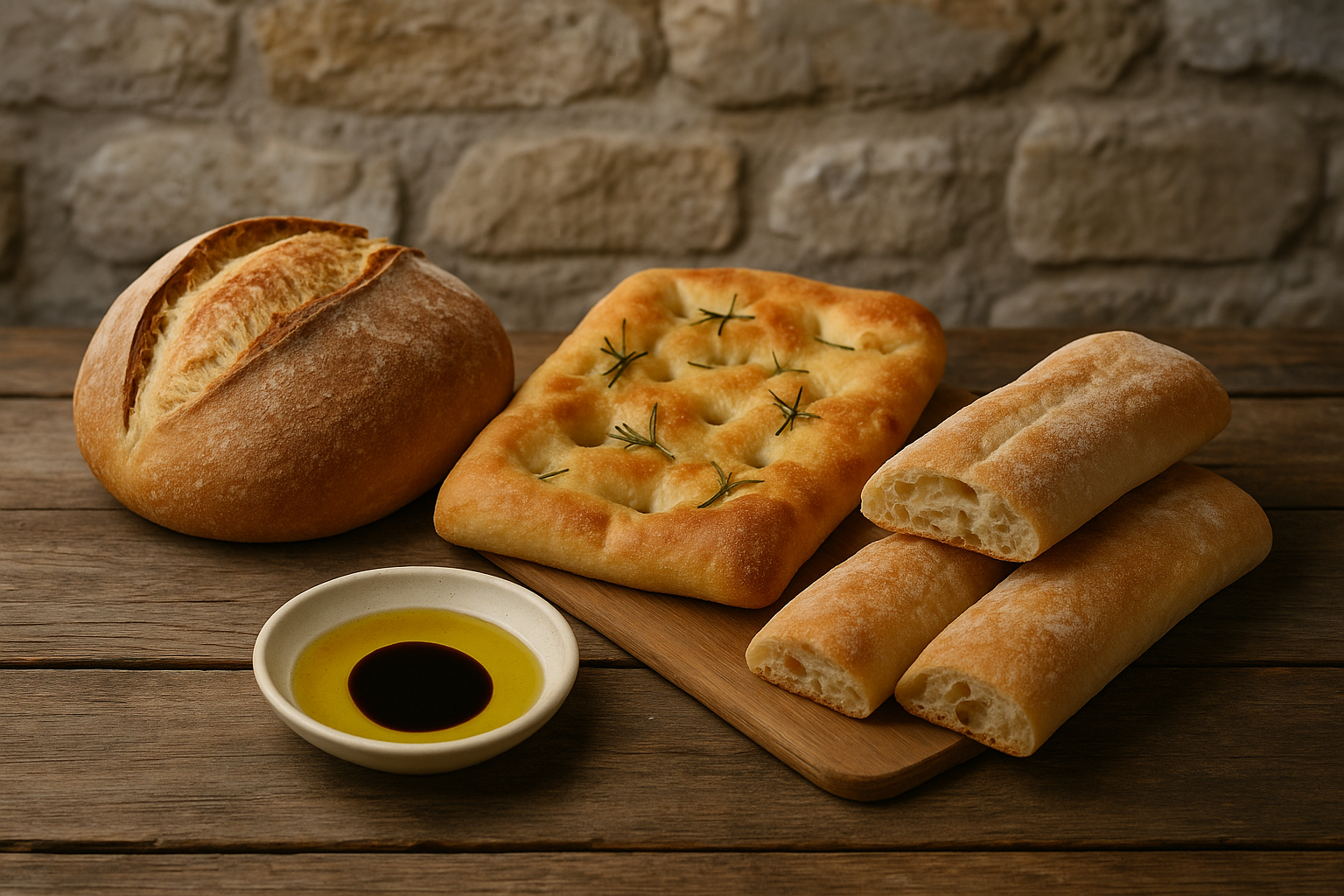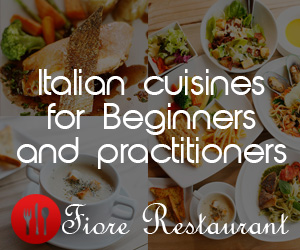Have you ever wondered why they don’t use garlic bread in Italy? It’s because their bread celebrates simplicity and purity.
In this guide, we’ll break down the real story behind Italian bread traditions in simple terms so you’ll know exactly what Italians eat and why garlic bread never made it to their tables.
We’ll cover:
- Traditional Italian bread and its authentic characteristics
- American restaurants created the garlic bread myth.
- What Italians actually serve with their meals
- Simple Italian bread recipes you can make at home
- Learn how to enjoy bread the real Italian way.
We’ve helped dozens of food enthusiasts in our cooking classes learn these authentic Italian bread traditions using these same methods that Italian families have used for generations.
Read on to dive into real Italian bread.
The Truth About Garlic Bread in Italy
The expectation of garlic bread in America contrasts sharply with Italy’s focus on simple bread, creating a huge gap. This mix-up has been going on for many decades.

Let’s break down how we got so confused:
How American Restaurants Created This “Tradition”
American restaurants created garlic bread by adding garlic and butter to plain Italian bread to satisfy local taste preferences. This adaptation happened when Italian-American immigrants (around 4 million) arrived with classic Italian bread recipes in their hearts.
However, American diners wanted bolder flavors than traditional Italian bread offered. So restaurant owners began this evolution that created what we now call “garlic bread.” The problem is, no Italian recipe book would recognize this creation.
What Italians Think When They See Garlic Bread
Italians often find garlic bread confusing and unnecessary. In Italy, bread is treated with respect and is meant to showcase its natural wheat flavor, not be overshadowed by strong toppings. Thus, bread is intended to complement meals, not compete with them.
To put it simply, garlic butter on bread is like pouring hot sauce over a perfectly cooked steak because it disrupts the natural taste. For Italians, good bread should enhance the meal by highlighting the wheat, not by masking it with bold flavors like garlic.
The Real Role of Garlic in Italian Cooking
Don’t get me wrong here. Italians definitely love garlic, but bread isn’t the place for it. Instead, garlic goes in pasta dishes, gets mixed with olive oil for vegetables, and flavors meat. But Italian bread stays pure and simple because real Italian bread traditions focus on technique.
Here are the specific types of bread you’ll encounter at an authentic Italian table.
Authentic Italian Bread Customs You Need to Understand
Now that we’ve cleared up the garlic bread confusion, let’s walk through what Italians really do with bread. Their approach follows time-honored steps that have shaped Italian dining for centuries. Remember, these customs teach respect for food, not just baking skills.
Follow this traditional Italian bread journey:
- Match Your Region: Every region in Italy has its own bread style. For example, Tuscan bread has no salt because the food is already salty. Roman bread is crusty on the outside with a soft inside. So each type of Italian bread matches the local cooking style like a puzzle piece.
- Keep It Simple: What makes Italian bread so different from American versions? The secret lies in restraint rather than addition. Initially, flour and yeast mingle with warm water, forming a dough that rises slowly and allows its natural flavors to unfold. At the same time, the wheat’s real flavor comes through, without garlic, herbs, or butter. Because of this quiet simplicity, every bite reveals the essence of bread in its truest form.
- Support, Don’t Dominate: Bread never steals the spotlight at an Italian dinner table. Instead, it works quietly in the background to support other dishes. The crusty bread soaks up sauce, cleanses your palate, and bridges flavors between courses. Because of this, the main dishes get all the attention.
- Clean Your Palate: Here’s something most restaurants get wrong about Italian dining. Experienced Italians eat small pieces of plain bread between different courses to reset their taste buds. This simple habit lets them fully appreciate each new dish without flavor interference. The bread works like a neutral flavor bridge throughout the meal.
Let’s look at some simple ways to make real Italian bread recipes at home.
What Italians Commonly Serve with Their Meals
Italians serve plain, high-quality breads that complement their main dishes rather than compete with them. The bread selection focuses on five classic types that have been perfected over centuries. Unlike random choices, each Italian bread type serves a specific role in the meal.

These are the bread types you’ll find at traditional Italian tables:
- Plain Crusty Bread: This is the workhorse of Italian bread. It has a golden brown crust and soft interior that soaks up olive oil and sauce perfectly. That’s why most Italian families buy fresh loaves daily from local bakeries.
- Focaccia: Flat, dimpled bread drizzled with olive oil and sometimes topped with herbs or olives. Italians serve this as a side dish or light meal, never as an appetizer with heavy toppings.
- Pane Pugliese: A large loaf from Southern Italy with a thick crust and chewy interior. This rustic bread pairs beautifully with tomato-based dishes and aged cheeses.
- Ciabatta: Elongated bread with a crispy crust and airy holes inside. They’re perfect for making paninis or serving alongside soups and salads.
- Olive Oil and Balsamic: Instead of butter, Italians dip their bread in high-quality olive oil, sometimes mixed with balsamic vinegar. This simple combination enhances the bread’s natural flavors.
Time to bring these genuine Italian flavors to your own kitchen.
Quick Italian Bread Recipes You Can Make at Home
You can make Italian bread at home with just a few simple ingredients. These recipes focus on traditional methods that create the classic flavors Italians love.
Try these beginner-friendly Italian bread recipes:
Classic Homemade Italian Bread
To begin, gather bread flour, yeast, warm water, and salt. Mix everything in a large bowl, and then knead the dough with a dough hook or by hand. Afterward, cover it with plastic wrap and let it rise until it doubles in size. When the dough has risen, shape it into a large loaf, place it on a baking sheet, and bake it until the crust turns golden brown.
Quick Focaccia for Beginners
If you’re looking for a quicker option, start by mixing flour, instant yeast, warm water, olive oil, and salt until a dough forms. After you’ve done that, spread the dough onto parchment paper and dimple it with your fingers. Then, brush it with olive oil and bake until it becomes crispy. This focaccia is perfect for sandwiches or dipping.
How to Enjoy Bread the Real Italian Way
Italians enjoy bread by treating it as a supporting meal companion, not the main attraction. They use bread to absorb leftover sauce and cleanse the palate between courses. This approach means the bread appears alongside dishes without fanfare or special presentation.

Beyond these basic practices, the respectful treatment goes even deeper. This cultural reverence means Italians never waste bread and consider it almost sacred food. Instead of using knives, they break it by hand, reminding diners that bread is more than just food but a tradition. Most importantly, they never load bread with butter or heavy seasonings that would mask the natural wheat flavors developed through careful preparation.
Experience True Italian Bread Traditions
Most people believe garlic bread represents Italian cuisine. This misconception has misled food lovers for decades. But when you get to know the real Italian bread traditions, it helps you appreciate genuine flavors and cooking methods that Italy treasures.
We’ve explored how American restaurants created garlic bread myths and Italian bread customs. This guide also covered traditional bread types, homemade Italian bread recipes, and proper Italian dining etiquette.
Ready to explore authentic Italian bread traditions? Join Fiore‘s hands-on cooking classes where our Italian-trained chefs teach techniques passed down through generations.




